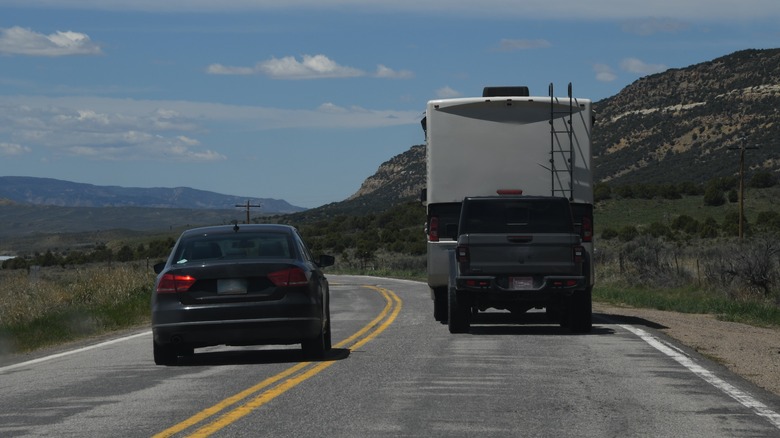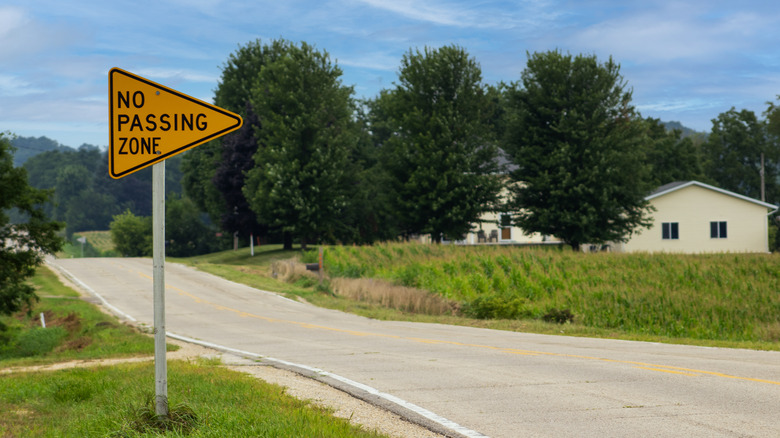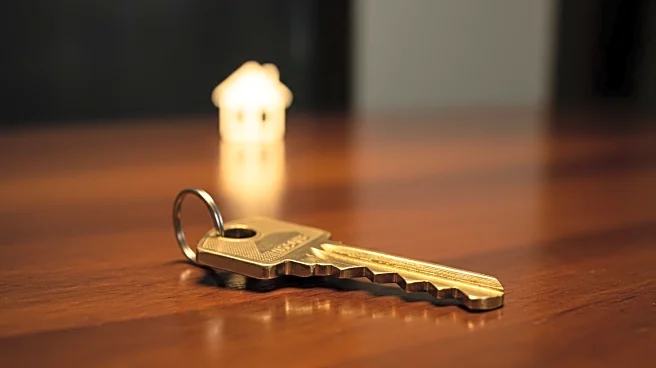
Do you know what it means to "drive left of center"? No matter if it pops up in a driver's ed class, an accident report, or a traffic stop, it's a phrase drivers need to be familiar with. Put simply, driving left of center means crossing the center line of a two-way road and driving (however briefly) into oncoming traffic. While there are some perfectly acceptable instances where you can drive left of center without consequence, the basic rule of thumb is that you should do it as little as possible.
It's because it puts you and others at significant risk — especially when done recklessly or without visibility. To avoid serious legal consequences (much less a deadly head-on collisions), you have to know when and how it's okay.
In most cases, driving left of center is flat-out wrong, especially when it's done to pass slower vehicles in areas with solid yellow lines or poor visibility. These no-passing zones are marked clearly to prevent driving left of center wherever the terrain, weather, or road layout makes it hard to see oncoming traffic. Broadly speaking, the only time you can ever cross the center line in a no-passing zone is to pass a slow-moving cyclist, avoid debris or a stalled vehicle, or make a left turn into a driveway or side street. Even so, you still have to make sure there's no oncoming traffic and that you can safely return to your original lane without getting in the way of any other drivers.
Read more: Every Major Car Insurance Company Ranked Worst To Best (According To Consumer Reports)
When Is It Legal To Drive Left Of Center?

An easy way to know whether or not you can legally drive left of center is to look at the markings on the road. A broken yellow line means you can legally pass on the left if the coast is clear. A solid yellow line on one side and a broken yellow line on the other means the solid side can't cross but the broken side can. A double solid yellow line means no passing in either direction (unless you're making a left turn).
These markings are going to mean the difference between safe driving and reckless driving, especially when you're making your way around curves, over hills, or dealing with other visibility concerns. Considering head-on collisions are among the most deadly types of accidents, making up nearly 30% of all motor vehicle fatalities, the importance of these road markings cannot be overstated. Even if you're a cautious driver, others might not be. That means driving in the left lane, even for a moment, can turn dangerous in a flash.
Driving Left Of Center Vs. Driving In The Left Lane

"Driving left of center" is not to be confused with the left lane on multi-lane highways (although that can certainly be a dangerous place in its own right). On highways with multiple lanes moving in the same direction, the left lane is generally reserved for passing. Laws about this are going to vary from state to state, but the fact remains: Drivers typically treat it like a "fast lane," but there's no legal backing for this. In fact, over two dozen states, including Texas, Colorado, and California, say drivers are required by law to move to the right if they're not actively passing another vehicle — nothing about using the far-left lane to exceed the speed limit.
Back to the matter at hand: driving left of center can be legal, like when passing a semi truck on the right, but it is never without risk. Whether you're crossing over to pass a slow-moving car or maneuvering around a bike rider, knowing the right way to drive left of center is how you avoid tickets and protect lives. If you're unsure, just look at the lines.
Want the latest in tech and auto trends? Subscribe to our free newsletter for the latest headlines, expert guides, and how-to tips, one email at a time.
Read the original article on SlashGear.













